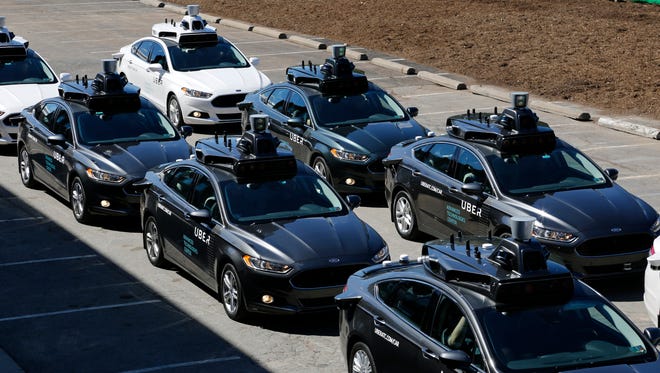8 big challenges remain for self-driving car makers
Self-driving cars are here to stay.

Monday's announcement of self-driving car guidelines by Transportation Secretary Anthony Foxx was a clear signal that the federal government wants to encourage them while setting rules to guide automakers, suppliers and software developers to put safety before speed.
Foxx released a broad outline and a 15-point safety assessment within which he and National Highway Traffic Safety Administrator Mark Rosekind want to keep this fast-moving technology on track.
Auto safety regulations can be confusing enough for an industry that has been clearly defined for more than a century. When you consider the complexity and new companies — think Google, Uber, Lyft, Mobileye — reshaping our vision of mobility, and the thousands of questions they raise, regulators can be overwhelmed.
Remember, this is an agency also struggling to expedite the giant and complex task of recalling tens of millions of Takata air bags.
Despite the collaborative spirit of Monday's announcement, the proof will be in the execution by industry and the government. None of the interested parties can foresee all the unintended consequences.
Here are the challenges that still elude the industry:
1. Self-driving technology is not yet ready for prime time. The risk in the new technology likely will come in the progression of Automated Driver Assist Systems that are already in many new vehicles, but which fall short of enabling the sensors, cameras, radar and light-detecting technology from guiding a vehicle without human input. For example, when 40-year-old Joshua Brown died in May when his Tesla Model S crashed into a tractor-trailer, the Tesla's Autopilot feature was activated. But despite its name, the system was not fully autonomous. The car was moving at 74 m.p.h. and Brown did not retake control when the truck began to turn in front of his Tesla.
2. It's unknown how many drivers will embrace it. The U.S. Department of Transportation and National Highway Traffic Safety Administration want to support more than impede self-driving cars even as they recognize how much they don't know yet about how autonomy will be integrated into traffic flows dominated by human drivers.
3. Consumers will need to be educated about it. This should be a very high priority for both manufacturers, suppliers, software developers and government regulators. The vehicles may meet all safety requirements, but if the owner doesn't understand when he or she must re-engage, or if he or she perceives the vehicle to be fully autonomous when it's only partially autonomous, bad things could happen.
4. How to define the levels of vehicle autonomy. The government is setting aside its four-level gradation of autonomy and in its place will adopt the five-level definition of the Society of Automotive Engineers. Level 0 = no automation. Level 1 = limited automation but with driver controlling all driving situations. Level 2 = partial automation where software can control acceleration and braking. Level 3 = conditional autonomy where the software and sensors accelerate and brake and monitor the vehicles' environment, but it can alert the driver to take control when needed. Level 4 = high automation where the sensors, Lidar, cameras and software can guide the car to a safe position if the driver fails to re-engage. Level 5 = full automation where the technology can navigate and manage any situation and the driver need not be engaged.
5. Drivers become passengers. Transportation Secretary Anthony Foxx clarified whether a licensed driver will need to be in a fully autonomous vehicle. "When the car is operated by the software, we (NHTSA) intend to regulate the safety of the vehicle. When the human being is operating the vehicle the respective state laws would apply regarding the appropriate licensing."
6. Where's the brake pedal? Will a fully autonomous (Level 5) vehicle be required to have a steering wheel, acceleration and brake pedals? Google has said its goal is to remove all physical controls from the car. Ford also has said it intends to offer a vehicle without a steering wheel and pedals for use in a ride-hailing fleet by 2021. On Tuesday, Foxx said: "We're laying out issues to be resolved and we're not saying they have to be resolved one way or another."
7. States will have different rules. The state of California currently requires a steering wheel and control pedals. Google plans to remove them. How will that be resolved? Based on Foxx's statement, if NHTSA says OK to no steering wheel and pedals, then California and other states will have to stand down.
8. The human factor. Another of the challenges will be making autonomous vehicles recognizable to human drivers. In their early stages completely self-driving vehicles will be programmed to err on the side of caution. For example, they may wait longer for pedestrians or crossing traffic than most drivers do. If the autonomous vehicle is marked as such, other drivers can adjust.
There is clearly a need for self-driving vehicles. Traffic deaths are up, with 35,200 people deaths in U.S. traffic accidents last year, a 7.7% increase from 2014. About 95% of those were caused by human error. McKinsey & Co., the global consulting firm, estimates that fully automated vehicles could prevent 90% of those deaths.